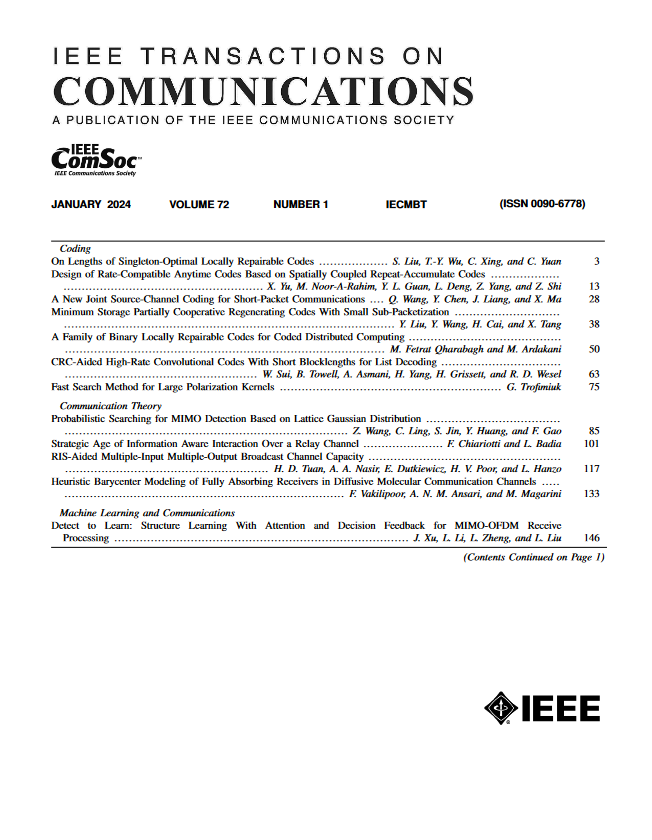基于知识图谱的无人机认知语义通信鲁棒目标检测
IF 8.3
2区 计算机科学
Q1 ENGINEERING, ELECTRICAL & ELECTRONIC
引用次数: 0
摘要
无人驾驶飞行器(uav)被广泛用于目标检测。然而,现有的基于无人机的目标检测系统面临着严峻的挑战,即有限的计算、能量和通信资源,这限制了可实现的检测性能。为了克服这些挑战,提出了一种利用知识图谱的无人机认知语义通信系统。此外,我们还设计了一种多尺度的语义压缩编解码器,在保证检测性能的同时减少数据传输量。考虑到无人机通信场景的复杂性和动态性,引入了一种具有鲁棒信道自适应能力的信噪比自适应模块。在此基础上,提出了一种利用知识图克服信道噪声干扰和压缩失真的目标检测方案。在实际航空图像数据集上进行的仿真结果表明,我们提出的语义通信系统在检测精度、通信鲁棒性和计算效率方面优于基准系统,特别是在处理低带宽压缩比和低信噪比的情况下。本文章由计算机程序翻译,如有差异,请以英文原文为准。
UAV Cognitive Semantic Communications Enabled by Knowledge Graph for Robust Object Detection
Unmanned aerial vehicles (UAVs) are widely used for object detection. However, the existing UAV-based object detection systems are subject to severe challenges, namely, their limited computation, energy and communication resources, which limits the achievable detection performance. To overcome these challenges, a UAV cognitive semantic communication system is proposed by exploiting a knowledge graph. Moreover, we design a multi-scale codec for semantic compression to reduce data transmission volume while guaranteeing detection performance. Considering the complexity and dynamicity of UAV communication scenarios, a signal-to-noise ratio (SNR) adaptive module with robust channel adaptation capability is introduced. Furthermore, an object detection scheme is proposed by exploiting the knowledge graph to overcome channel noise interference and compression distortion. Simulation results conducted on the practical aerial image dataset demonstrate that our proposed semantic communication system outperforms benchmark systems in terms of detection accuracy, communication robustness, and computation efficiency, especially in dealing with low bandwidth compression ratios and low SNR regimes.
求助全文
通过发布文献求助,成功后即可免费获取论文全文。
去求助
来源期刊

IEEE Transactions on Communications
工程技术-电信学
CiteScore
16.10
自引率
8.40%
发文量
528
审稿时长
4.1 months
期刊介绍:
The IEEE Transactions on Communications is dedicated to publishing high-quality manuscripts that showcase advancements in the state-of-the-art of telecommunications. Our scope encompasses all aspects of telecommunications, including telephone, telegraphy, facsimile, and television, facilitated by electromagnetic propagation methods such as radio, wire, aerial, underground, coaxial, and submarine cables, as well as waveguides, communication satellites, and lasers. We cover telecommunications in various settings, including marine, aeronautical, space, and fixed station services, addressing topics such as repeaters, radio relaying, signal storage, regeneration, error detection and correction, multiplexing, carrier techniques, communication switching systems, data communications, and communication theory. Join us in advancing the field of telecommunications through groundbreaking research and innovation.
 求助内容:
求助内容: 应助结果提醒方式:
应助结果提醒方式:


